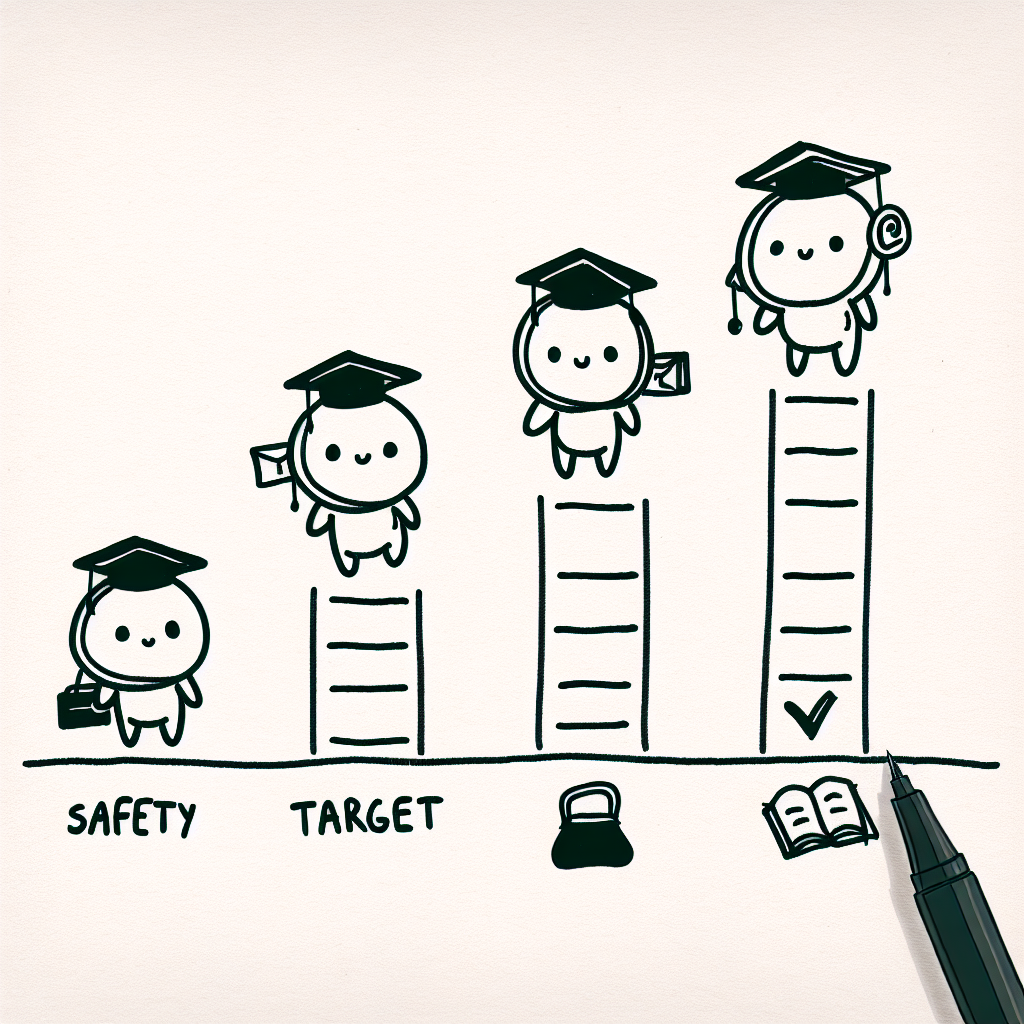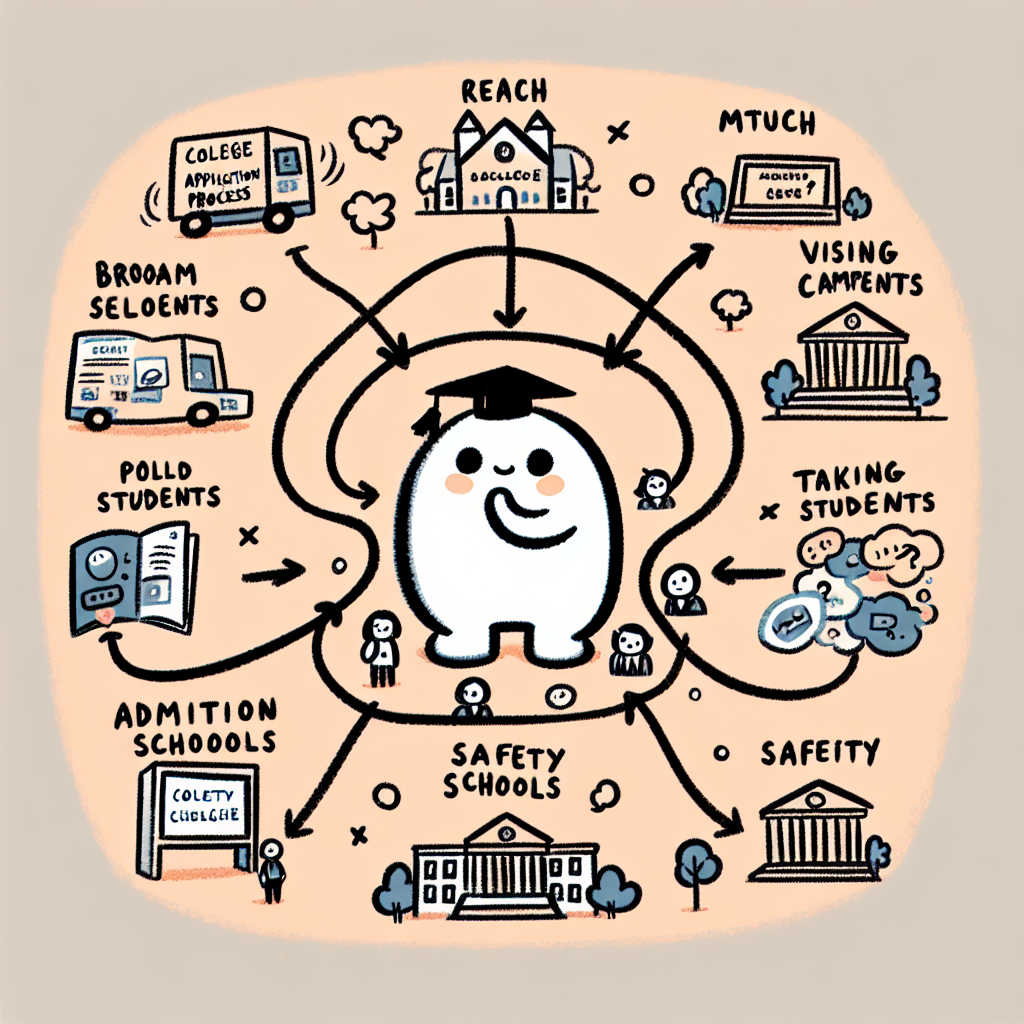Introduction: Why the Number of Applications Matters
Deciding how many colleges to apply to is a key part of a successful admissions strategy. In today’s competitive college admissions landscape, students face increasing selectivity, particularly at top-tier institutions. Acceptance rates at elite schools have dropped significantly in recent years, making it more important than ever to have a thoughtful approach to the number of applications.
Applying to college is not just about increasing your chances—it also comes with costs. Each application typically requires a fee, which can range from $50 to $90, and may involve additional expenses for sending test scores or completing supplemental materials. Beyond the financial cost, there is a significant investment of time and emotional energy. Crafting strong personal statements, tailoring essays to each school, and managing deadlines can quickly become overwhelming.
Because of these factors, it’s crucial to be strategic and intentional when deciding how many colleges to apply to. A well-balanced list should reflect your academic profile, personal goals, and the likelihood of admission. Rather than applying to as many schools as possible, focusing on quality over quantity can lead to better outcomes and a more manageable process.
Understanding how many colleges you should apply to is not just a numbers game—it’s about making informed choices that align with your aspirations and resources.

🎯 Recommended Number of Applications: What the Experts Say
College Board Guidelines
According to guidance from the College Board, students are encouraged to apply to 5–8 colleges to maintain a list that is both comprehensive and manageable. This range allows for a thoughtful mix of schools without overwhelming the applicant in terms of workload and application fees. The goal is to balance ambition with realism while ensuring a strong chance of acceptance. ➤ U.S. News – How to Make a College List
Minimum Application Strategy
At a minimum, students should apply to at least three schools, covering a range of acceptance probabilities:
- 1 safety school where admission is highly likely
- 1 target school where admission is reasonably likely
- 1 reach school where admission is less likely but still possible
This basic strategy helps ensure that regardless of outcomes, students have viable options. ➤ U.S. News – 5 Steps to Choose How Many College Applications to Send
Individual Considerations
The answer to how many colleges should I apply to also depends on personal circumstances. Students should take into account:
- The competitiveness of their intended major
- Their need for financial aid or scholarships
- Preferences regarding location, campus size, and culture
- The strength of their application, GPA, and test scores
These factors can influence whether a student leans toward applying to more or fewer schools within the recommended range.

🧭 Building a Balanced College List
When considering how many colleges should I apply to, building a balanced list is crucial. A well-rounded selection of schools increases your odds of acceptance and ensures you have viable, exciting options when decisions roll in.
Categories of Schools
- Safety Schools: These are colleges where your academic credentials—such as GPA and standardized test scores—are well above the school’s average admitted student. Admission is highly likely.
- Target Schools: Your academic profile closely matches the average admitted student. These schools are reasonably competitive, and while admission isn't guaranteed, you have a solid chance.
- Reach Schools: These are highly selective institutions where your academic profile may be below or at the lower end of the admitted range. Even highly qualified students may find admission challenging.
Sample List Distribution (for 7 schools)
To maintain balance when answering how many colleges should I apply to, consider this distribution:
- 2–3 Safety Schools
- 2–3 Target Schools
- 1–2 Reach Schools
This structure helps ensure you're not placing all your hopes on hard-to-get-into institutions while still aiming high.
Why Balance Matters
Balancing your college list:
- Maximizes chances of acceptance: Diversifying your applications improves your odds of getting in somewhere that fits your goals.
- Avoids overloading on high-risk options: Too many reach schools can result in few or no acceptances, which limits your choices.
- Provides real, exciting choices in the spring: A balanced list leads to a more rewarding decision-making process when offers come in.
Ultimately, when deciding how many colleges should I apply to, a balanced approach ensures both ambition and practicality.

🛠️ Strategic Planning Tips
When thinking about how many colleges should I apply to, strategic planning is essential. Here are key steps to help you build a focused, realistic application list.
Start with Research
Begin by researching schools that align with your academic and personal goals. Explore colleges based on factors such as:
- Academic programs offered
- Campus culture and community
- Geographic location and climate
- Housing options and student life
This research helps narrow your choices and ensures you're applying to schools that fit your priorities. ➤ U.S. News – Narrowing Your Choices
Evaluate Fit and Values
Identify what matters most to you in your college experience. Consider:
- Campus size and whether it's in an urban, suburban, or rural setting
- Average class size and access to faculty
- Availability of extracurriculars, clubs, and internship opportunities
This self-assessment ensures your application list reflects your values and preferences.
Understand Admissions Requirements
Each college has specific admissions criteria. Stay organized by understanding:
- Application deadlines (Early Action, Early Decision, Regular Decision)
- Required materials such as personal essays, recommendation letters, and test scores
- Types of applications accepted (Common Application, Coalition Application, or school-specific portals)
Being aware of these requirements ensures you meet all obligations on time. ➤ U.S. News – Applying 101
Budgeting for Applications
Applying to college can be costly, so plan ahead:
- Expect to pay $50–$90 per application on average
- Include costs for standardized tests, score reports, and any travel for campus visits or interviews
- Look into fee waivers if you qualify, which can significantly reduce your expenses
By factoring in costs early, you can decide how many colleges to apply to without overextending your resources.

How to Finalize and Refine Your List
Narrowing Your Options
When deciding how many colleges should I apply to, it's important to start with a broad list and then methodically narrow it down. Begin by researching and compiling a range of schools that fit your academic interests, geographic preferences, and potential career goals. Once you have that preliminary list, refine it based on more personalized criteria:
- Visit experiences: Whether virtual or in-person, campus visits offer insight into the culture, facilities, and overall atmosphere of a school.
- Conversations with current students or alumni: Firsthand accounts can provide a realistic view of student life, academic rigor, and support services.
- Admission rates and likelihood of acceptance: Review each school's selectivity and compare it to your academic profile to gauge your chances of admission.
A thoughtful approach like this can help ensure you're applying to a balanced mix of reach, match, and safety schools. U.S. News – Apply to College offers detailed resources to guide this process.
Avoiding Common Pitfalls
As you finalize your list, be aware of common mistakes that can derail your efforts:
- Applying to too many reach schools: While it's good to aim high, overloading your list with highly selective colleges may reduce your chances of acceptance overall.
- Ignoring financial fit: Consider cost, available aid, and long-term financial impact. A school that’s a poor financial fit can lead to unnecessary debt.
- Over-relying on rankings: Rankings don’t capture everything. Focus instead on factors that align with your personal and academic goals.
- Last-minute list changes: Sudden shifts based on impulse or peer influence can undermine months of research. Make changes only if well-supported by new information.
Being deliberate in this phase can help answer the question of how many colleges should I apply to with confidence and clarity.

Final Thoughts: Quality Over Quantity
When considering how many colleges should I apply to, it's important to remember that more applications do not automatically lead to better outcomes. Submitting a large number of applications can spread your time, energy, and resources thin, often leading to lower quality submissions.
Instead, focus on crafting strong, thoughtful applications for each school on your list. This includes tailoring your essays, thoroughly researching each institution, and demonstrating genuine interest. Admissions officers can often tell when an application lacks personal investment.
Ultimately, prioritize applying to colleges where you would genuinely be happy to attend. A well-curated list of schools that align with your academic, social, and financial needs will serve you far better than a long list submitted with minimal effort. Quality over quantity should guide your approach to the college application process.

📚 Additional Resources
If you're still wondering how many colleges should I apply to, the following resources offer helpful guidance to refine your college list and application strategy:
- U.S. News – How to Make a College List: Tips on creating a balanced list of schools to apply to.
- U.S. News – 5 Steps to Choose How Many College Applications to Send: A step-by-step guide to deciding the right number of applications.
- U.S. News – Narrowing Your Choices: Advice on evaluating and narrowing down your college options.
- U.S. News – Applying 101: A general overview of the college application process.
- U.S. News – Apply to College: Comprehensive guidance on applying to colleges, from planning to submission.
These articles can help you make informed decisions as you determine how many colleges you should apply to.














